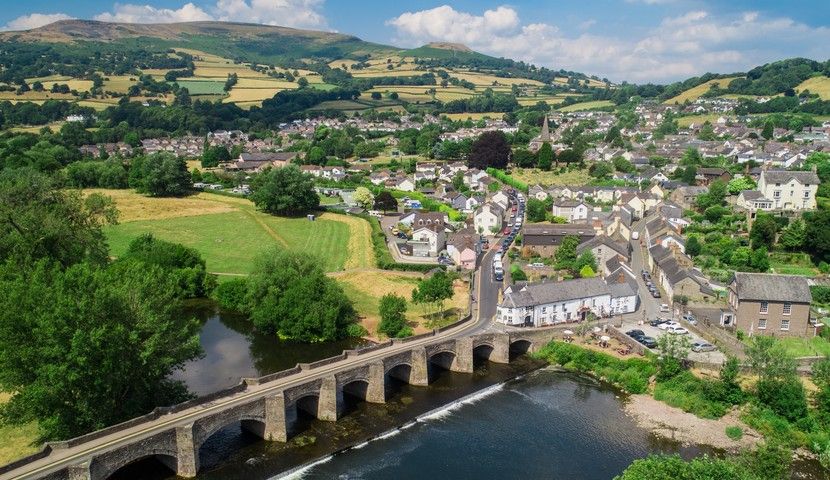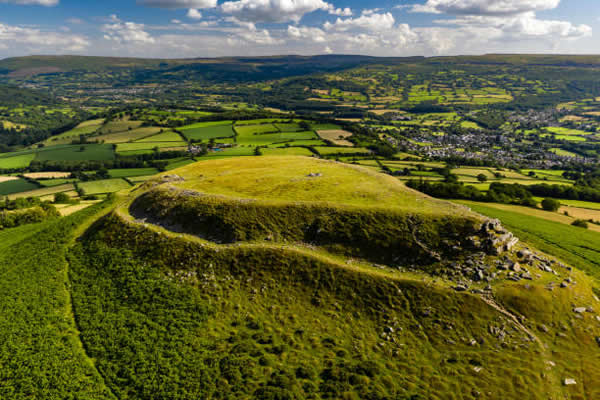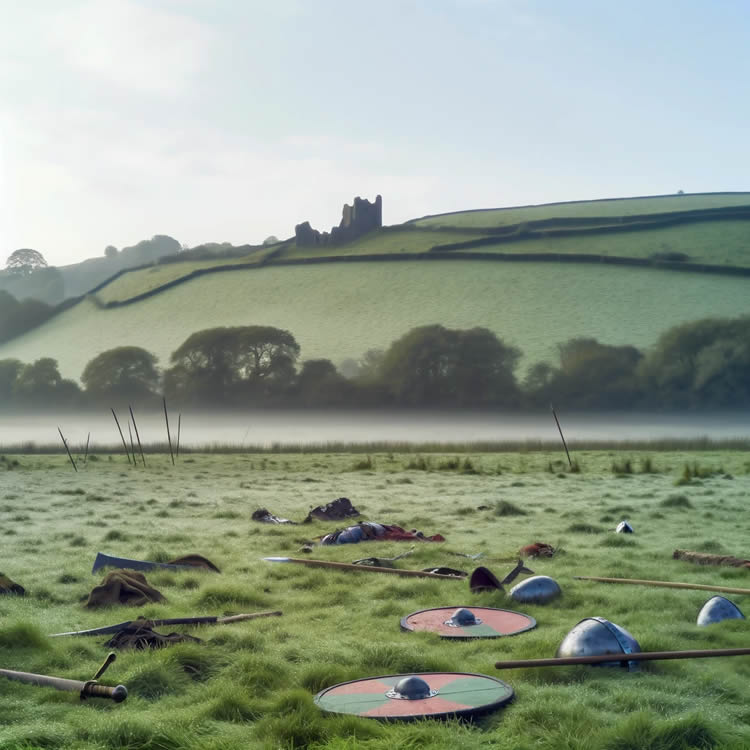Crickhowell: A Journey Through Time
Welcome to the historical tapestry of Crickhowell, a Welsh gem nestled in the Usk Valley, within the Brecon Beacons National Park. Join us as we explore the rich layers of history that have shaped this charming town through the ages.
Prehistoric Beginnings: The Iron Age Hillfort
The story of Crickhowell stretches back to prehistoric times, where atop Table Mountain (Crug Hywel) lies evidence of ancient beginnings. This Iron Age hillfort, named after a local chieftain, Hywel, was a stronghold of the early Welsh tribes. Its elevated position provided strategic advantages and a communal hub for the Iron Age settlers, their livestock, and their culture.
Roman Influence: A Touch of Empire
While the Romans never fully conquered Wales, their presence on the fringes of the Brecon Beacons left indelible marks. Roman roads and fortifications skirted the area, with nearby sites suggesting a period of adaptation and coexistence with the local Celtic tribes. Trade, cultural exchange, and the occasional skirmish would have characterised this era.
The Norman Conquest: Castles and Conflict
The Norman incursion brought a new wave of transformation. The 12th-century Norman Crickhowell Castle stands as a testament to this period of military strategy and political manoeuvring. Overlooking the River Usk, the castle served as a bastion of control and a symbol of Norman power, later succumbing to the enduring Welsh resistance.
Medieval Flourishing: Markets and Merchants
The granting of a market charter in 1281 by Sir Grimbald Pauncefote marked Crickhowell’s evolution into a thriving market town. The weekly markets and annual fairs became the heartbeat of the community, with the town growing around the trade and commerce that these gatherings encouraged.
The Tudor Era: Religion and Reformation
During the Tudor period, the religious landscape of Crickhowell shifted dramatically. The dissolution of the monasteries and the rise of Protestantism changed the face of worship in the town. Evidence of this turbulent time is etched into the stonework of St. Edmund’s Church, which has served the town since the 14th century.
Industrial Revolution: Rural Resilience
The Industrial Revolution largely bypassed Crickhowell, allowing it to preserve its rural character. While neighbouring regions surged with coal and iron, Crickhowell remained a pastoral retreat, cherished for its untouched beauty and serene landscape.



